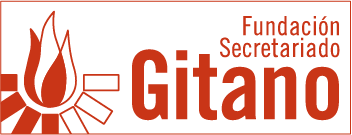Bridging the education gap: progress in training adult Roma people [editar]

Fundación Secretariado Gitano is celebrating an important educational achievement: 105 Roma, who are on job placement pathways, have enrolled in the 2024/2025 academic year to obtain their Compulsory Secondary Education Certificate. This training has been carried out in collaboration with the ECCA and INAV distance learning centres, within the framework of the Social Inclusion, Youth Guarantee and Fight against Poverty Programme and the Youth Employment Programme, both funded by the ESF+.
The results have been extraordinary: 96% of the students have successfully graduated. Among the stories that inspire us most are those of Jessenia Cortiñas and Desiré Hernández, two young Roma women who have broken down barriers and shown that, with opportunities, dreams can be achieved.
Jessenia Cortiñas, 21, dropped out of school in the second year of secondary education, like 40% of Roma students when they turn 16, according to our study Educational situation of Roma students in Spain. This year, she not only graduated, but was recognised as one of the three best students among ECCA students in Spain.
Desiré Hernández, 20, has also graduated and obtained the top position to enrol in the Intermediate Vocational Training Course in Pharmacy and Parapharmacy. Her story represents the 63% of young Roma between the ages of 16 and 18 who leave the education system without graduating, compared to 4% of the general population. Today, Desiré returns to the classroom with strength and determination.
Both young women are examples of how, when the right conditions are created, talent and motivation flourish.
At Fundación Secretariado Gitano, we remain committed to education as a key tool for inclusion and employment. This is confirmed by the recent Evaluation of Results and Impact of the Acceder Programme 2000–2020, carried out by Red2Red, which points out that educational level is a determining factor for labour market inclusion. Although the job placement rate of the Roma population in the Acceder Programme is 34.3% (compared to 42.5% for the non-Roma population), this gap disappears when at least a Compulsory Secondary Education qualification is achieved, especially among Roma women.
We will continue to work to ensure that more and more Roma have access to quality education and can build a future with more opportunities.

